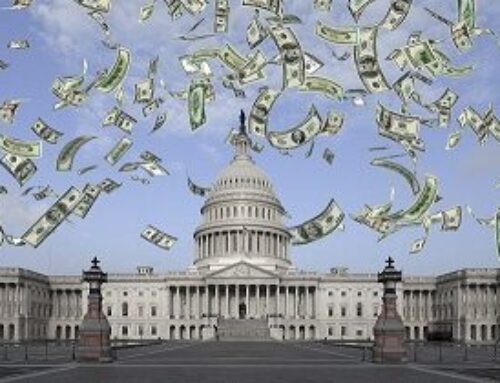|
January 14, 2014
Letter to Chairman of Senate Finance Committee Re: Tax Reform Discussion Drafts Dear Chairman Baucus: Taxpayers for Common Sense is a national non-partisan budget watchdog that has been working on behalf of the nation’s taxpayers since 1995. We applaud the work done to produce the tax reform discussion drafts. It has been more than a quarter-century since the last overhaul of the tax code, and in that time it has become littered with increased complexity, parochial tax treatments, and revenue giveaways. Everyone believes federal tax policy should improve economic growth. This will reduce the rate of growth of our debt – and should ultimately decrease the overall size of our debt. Many of the proposals set forth in the discussion drafts begin to remove unnecessary favoritism for certain corporate taxpayers, reduce the number of distortions in the tax code overall, and create more certainty with regard to international taxation. We believe these changes will generally make the tax code more efficient. Please find our more detailed comments below. We also believe that tax policy, like federal spending, must help maximize the benefits of economic growth for all taxpayers. We urge the Finance Committee to continue its work by tackling similar policies within the individual income tax system. Specific provisions, such as the Mortgage Interest Deduction, are expensive, ineffective, and predominantly benefit a small subset of individual taxpayers. The costs of this provision, and others like it, outweigh its benefits to economic growth. Finally, there must be more regular review of the individual and corporate tax codes to ensure that they are providing a return on the taxpayer’s forgone revenue investment. The existing lack of oversight and scrutiny rewards political inertia, rather than performance. Sincerely,
Ryan Alexander Observations on Discussion Draft on Cost Recovery and Accounting Tax Reform
Background
Observations
The draft reforms the tax subsidies that allow for immediate write off of intangible drilling costs (IDC), tertiary injectants, and mining exploration and development expenditures, as well as the rapid amortization of geological and geophysical expenditures. Natural resources developers would now be allowed a 5-year amortization of these expenditures. Economically, the useful lives of wells and mines on various formations can extend as long as 40 years. Non-US wells have 10-year amortizations under present law. The 5-year amortization also contrasts with the bill’s treatment of other forms of capital cost recovery, as it reduces depreciation benefits and lengthens the period for amortization of intangibles to 20 years. Granting a short 5-year recovery period for oil and gas well investments – the same as the proposed new recovery period for research and development expenditures (R&D) – implicitly accepts the oil industry’s fallacious argument that drilling oil wells is like R&D. The drilling of oil wells presents none of the uncertainty required for R&D expensing. Indeed, the costs of designing and fabricating drilling platforms, which can represent 60 to 80 percent of the costs of drilling a well, qualifies for the IDC deduction even though little uncertainty exists on how to build a platform.
The discussion draft rightly repeals the last-in, first-out (LIFO) inventory method, which has allowed oil refiners to maintain very favorable treatment of their costs. LIFO allows companies to defer payment on increases in the value of their goods even if those increases have nothing to do with general inflation – the avowed purpose of LIFO. It is unnecessary to allow the accumulated subsidy that has resulted from LIFO accounting be taken into income over 8 years rather than 4 years, as would occur under normal accounting rules.
Background Under financial accounting standards, a company must recognize the expected tax consequences of events recognized in their financial statements,[1] including recognition of deferred income tax on undistributed earnings of foreign subsidiaries. However, an exception to this recognition applies “if sufficient evidence shows that the subsidiary has reinvested or will reinvest the undistributed earnings indefinitely.”[2] The current U.S. tax system, combined with these financial statement rules, creates an incentive for the U.S. parent of a CFC that has low-taxed foreign earnings to indefinitely reinvest those earnings outside the U.S. Estimates suggest that as much as $2 trillion of deferred income on which tax has not been accrued has not been distributed by CFCs. While these earnings are held by CFCs for investment, a significant portion is held in U.S. investment accounts.[3]
Observations Example: The example below assumes a CFC with $10 million of deferred pre-tax income on which it paid $2.6 million in creditable foreign taxes at a rate of 26 percent, and that the U.S. rate is 35 percent. If the income were repatriated under present law, a tax of $900,000 would be due. Under the Senate Finance Committee draft, that liability is reduced to $514,286, but the opportunity to defer tax is eliminated.
*This presentation is simplified. The section 78 gross up is not shown, but assumed. Technically, the special deduction would be computed with respect to after tax income the result would be grossed-up for the taxes associated with that net income. The special deduction works to achieve a 20 percent rate on total income. This deduction is computed by dividing the excess of the current top rate for the year of deemed repatriation (currently 35 percent) over 20 percent by the top rate. In the example above, the taxable income of parent of the CFC is reduced to $5.7 million from $10 million. After the tax credits are allowed for foreign taxes paid at a 26 percent rate on the resulting taxable income, the parent would pay a lower additional tax of 5.14 percent (compared to 9 percent). In the case of income taxed at a very low rate such as Ireland’s low 12.5 percent rate, the Baucus draft would impose an additional tax of 12.9 percent, bringing the total U.S. and foreign tax to 25.4 percent, which is in the range of rates that the business community has suggested are reasonable for a U.S. rate in the context of tax reform.
A U.S. shareholder may elect to pay the net tax liability that results from the mandatory inclusion of pre-effective-date undistributed CFC earnings in up to eight equal installments. While the draft denies taxpayers who took advantage of tax havens and aggressive tax planning the opportunity to reap another windfall in the taxation of deemed distributions, the option to spread payments over 8 years seems like a budgetary gimmick. Many of the affected companies file audited financial statements. For these companies, the additional tax required by the deemed repatriation will have to be accrued immediately upon enactment – in advance of even the first cash payment required by the change. The eight-year spreading of payments is a cash-flow windfall.
Background Current law includes a variety of tax credits for biofuel production and distribution, biomass utilization, and use of “clean coal” technologies. Cellulosic ethanol is a form of biofuel made from cellulosic matter in plants, including corn stover (the leaves and stalks of corn plants), switchgrass, wood chips, and other plant wastes. The federal Renewable Fuel Standard (RFS) mandates production of 16 billion gallons of cellulosic ethanol by 2022. The fuel is subsidized by the federal government at a rate of $1.01 for each gallon produced.[4] Biodiesel or renewable diesel is also subsidized at a rate of $1.00 for each gallon produced or utilized in the blending process.[5] Biomass-based diesel qualifies as an “advanced biofuel” toward the RFS mandate. An alternative fuel credit is available to companies that produce unconventional fuels at a rate of 50 cents per gallon. An alternative fuels mixture credit is available at the same rate to companies that blend traditional fossil fuels with small amounts of high carbon fuels. The Alternative Fuel Vehicle Refueling Property Credit provides a 30 percent tax credit for facilities dispensing certain alternative fuels.[6] Open loop biomass facilities, which use agricultural livestock waste nutrients, nonhazardous cellulosic waste material, or other agricultural waste materials to produce electricity, are eligible for a production tax credit of 1.1 cents for every kilowatt-hour of electricity produced and sold. A 20 percent investment tax credit is currently available for qualified advanced coal projects that use integrated gasification combined cycle technology (IGCC), and a 15 percent investment tax credit is available for qualified advanced coal projects that use “clean coal” technology. A 20 percent investment tax credit is also available for certified industrial gasification projects. A credit of $10-$20 is available for each ton of carbon dioxide captured and disposed of in secure geological storage or used as a tertiary injectant in an oil or natural gas project. The program is limited to 75 million metric tons of qualified carbon dioxide captured.
Observations
The draft proposes to finally eliminate the existing patchwork of biofuel, biomass, and alternative fuel tax policies. It would replace these provisions with a “new tax credit for clean transportation fuel that is technology-neutral and performance-based.” Unfortunately, there are several problems with the new credit that make it problematic. The new transportation fuel credit would allow corn ethanol facilities powered by biomass sources to once again become eligible for federal tax breaks, even though the Volumetric Ethanol Excise Tax Credit (VEETC) was so unpopular that it ended in 2011. For the first time, corn butanol, another corn-based biofuel, would also become eligible for the new tax credit even though the use of corn-based biofuels has failed to reduce greenhouse gas emissions. The proposed credit also fails to take into account full life-cycle carbon emissions since it would exclude carbon emitted during the production of feedstocks used in ethanol or biodiesel production, such as corn or soybeans. It would also create unintended consequences as a result of increased biomass and biofuel production, such as higher food prices and indirect land use changes which cause deforestation and production on previously uncultivated land.
The draft proposes the option of claiming a 20 percent investment tax credit after 2016 for existing facilities that undertake a carbon capture and sequestration (CCS) retrofit that captures at least 50 percent of carbon dioxide emissions. Carbon capture and storage technology is largely untested and unproven. Current carbon capture technology would need to be scaled-up as much as 100 times in order to be workable in commercial power plant. Not only would it take massive investments in infrastructure and subsidies to test the commercial viability of CCS, but any consequent clean-up, should leaks or unforeseen accidents occur, would likely be paid for by taxpayers.
In general, a better policy choice than alternative fuel production and distribution tax credits is an upstream carbon tax. It would encourage through prices the adoption of energy efficiency measures by consumers and businesses. Imposition of an upstream carbon tax would not require the creation of a large new bureaucracy to measure actual emissions and collect the tax, and the number of firms required to file tax returns for an upstream tax would be limited. It would apply to the principle sources of CO2 emissions: coal, natural gas and petroleum products, and it could impose differing rates on each taxable substance so that each is taxed equivalently in terms of tons of potential CO2 emissions. The CO2 equivalence rate could be set and adjusted to achieve any desired combination of revenue collections and CO2 emissions reductions.
[1] ASC 740-10-10-2 [2] ASC 740-30-25-17. [3] Firms Keep Stockpiles of 'Foreign' Cash in U.S., Wall Street Journal (Jan. 22, 2013) [4] Cellulosic ethanol is also eligible for numerous grants, loan guarantees, and other subsidies through the farm bill energy title and various energy bill provisions. [5] Types of biodiesel eligible for the tax credit include those derived from the following feedstocks: “virgin oils, esters derived from corn, soybeans, sunflower seeds, cottonseeds, canola, crambe, rapeseeds, safflowers, flaxseeds, rice bran, mustard seeds, and camelina, and from animal fats.” http://www.propetroleum.com/PDFS/certificate_bio-diesel.pdf [6] Eligible facilities include gasoline stations, those installing biodiesel or 85% ethanol (E85) blender pumps, or repowering sites for electric vehicles. Stations dispensing natural gas, liquefied natural gas (LNG), and liquefied petroleum gas (LPG) are also eligible for the credit.
|












Get Social